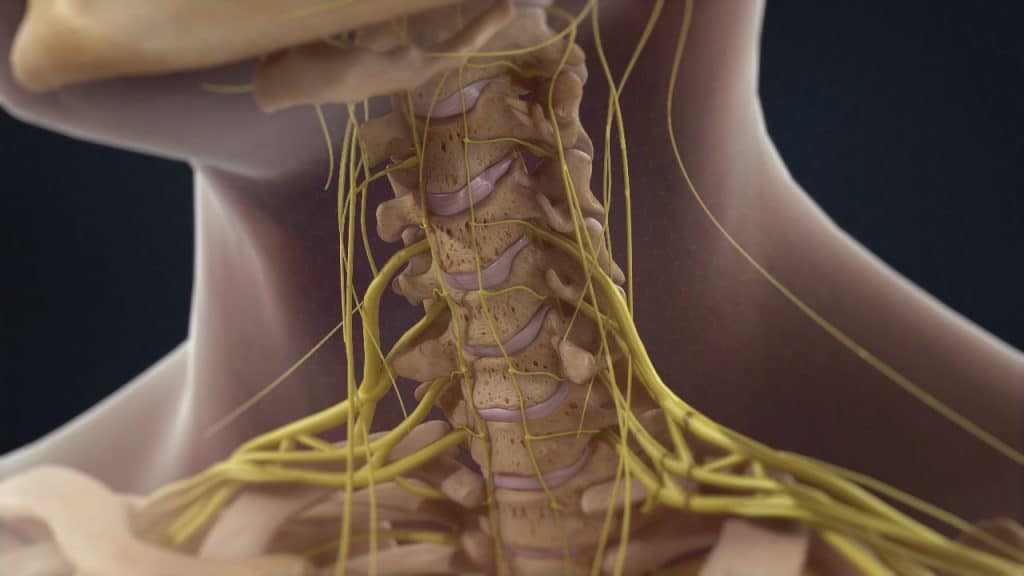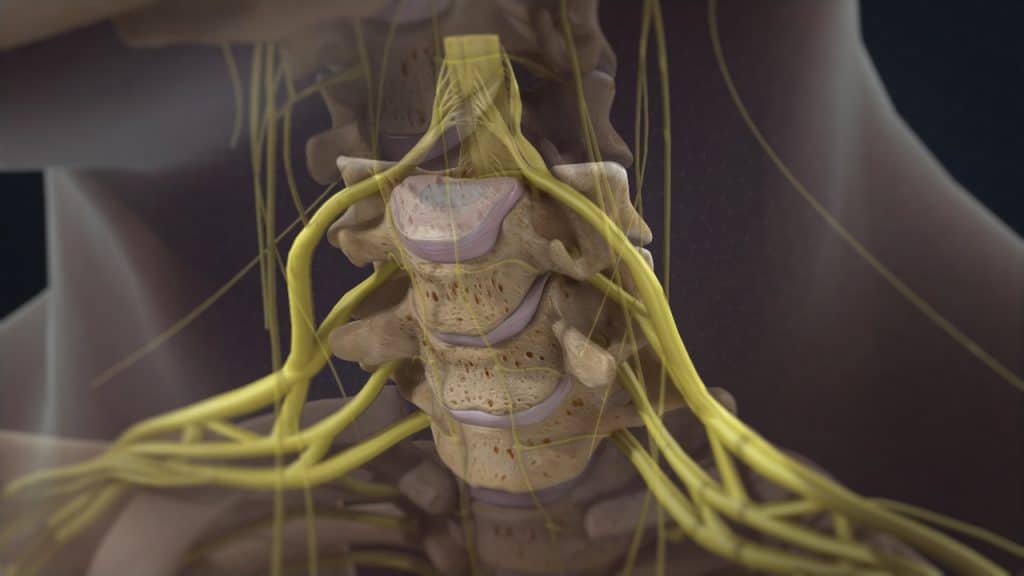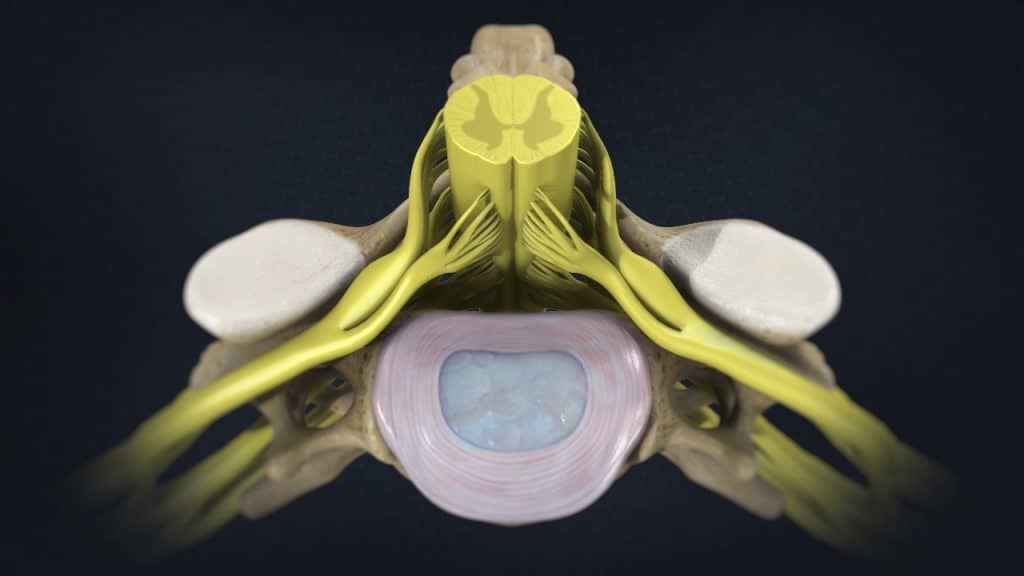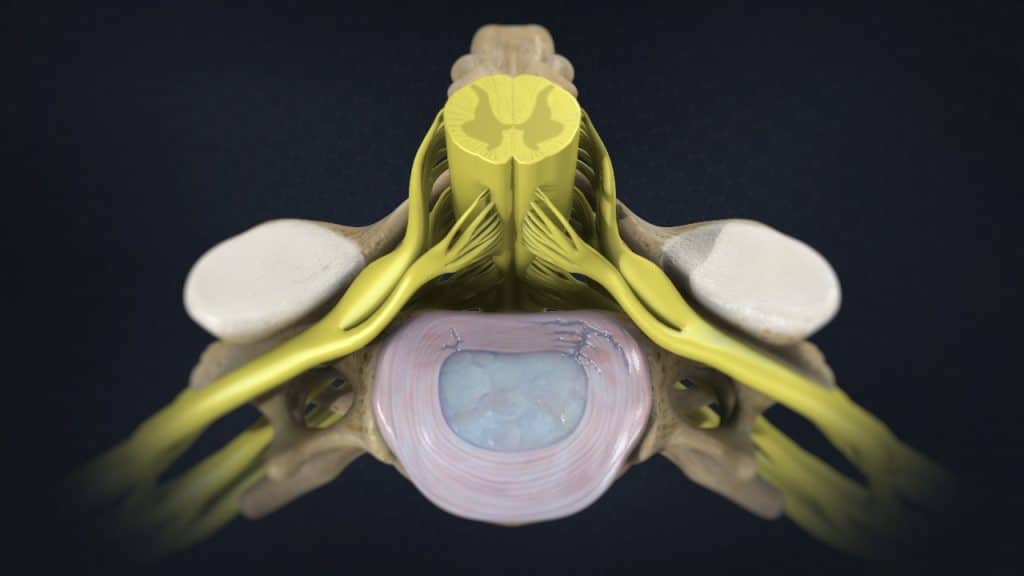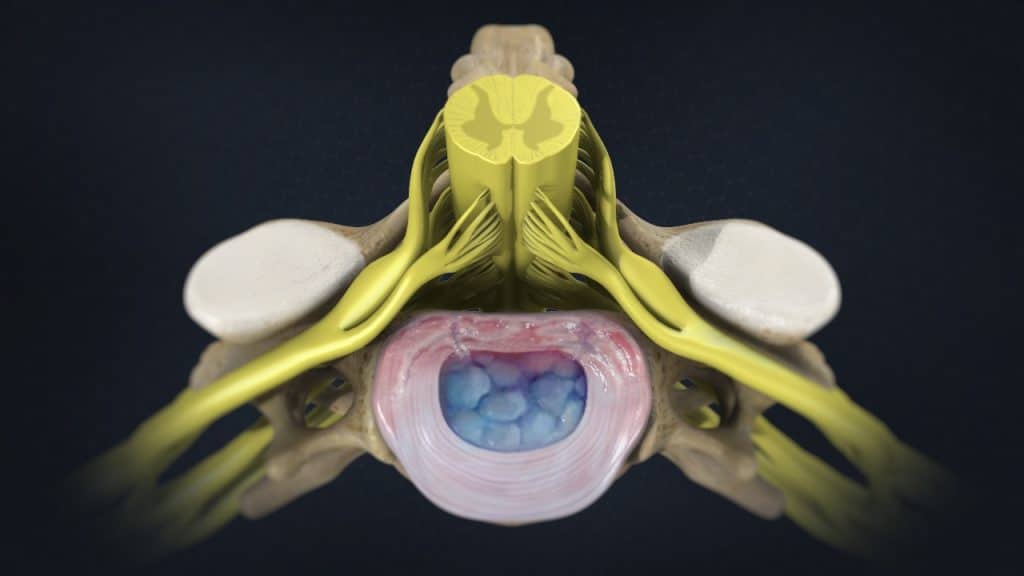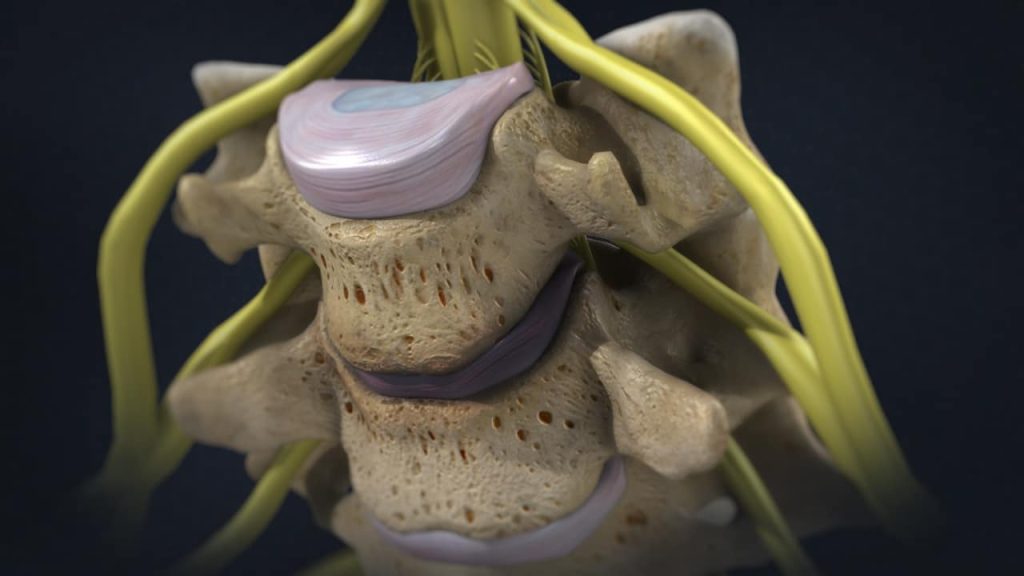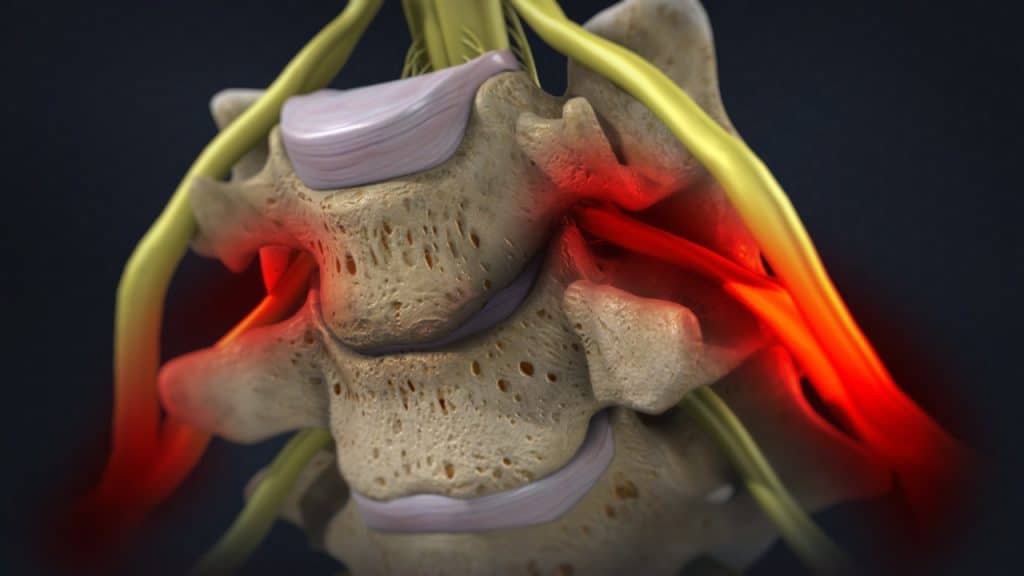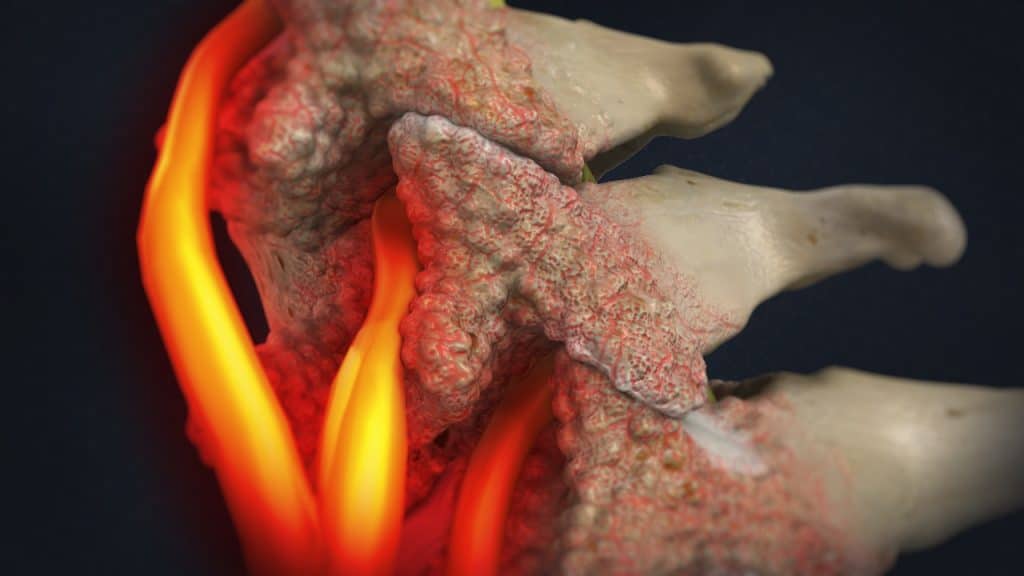Overview
The intervertebral discs are shock absorbers that are located between the bones of the spine, called vertebrae (hence the name intervertebral). They are designed to help the back stay flexible while resisting forces and to allow bending, flexion and twisting of the spine.
Degenerative disc disease is an age-related condition that happens when one or more of the discs deteriorate or break down, leading to pain.
Causes
A healthy, well-hydrated disc contains great amount of fluid in its center, known as the nucleus pulposus, which provides cushioning and flexibility to the spine.
1. Loss of Fluid
A degenerated disc is marked by a significant decrease in hydration, making the disc less flexible, thinner with narrowing the distance between the adjacent vertebrae, and more prone to tearing or cracking in the outer layer of the disc (disc wall), known as annulus fibrosus.
2. Disc Tearing – Disc Healing – Disc Weakening and Collapse
The disc is unable to truly repair itself because it does not have a direct blood supply. Consequently, a tear in the annulus either will not heal or will develop a scar tissue that is not as strong as the original one, having the potential to break again with further disc-weakening and collapse. The jelly-like material inside the disc nucleus may be forced out through the tears or cracks in the annulus and can cause what is known as a disc herniation.
3. Bone Spurs Formation
As the space between the two vertebrae above and below the affected disc gets smaller, there is less padding between them, and the spine becomes less stable. The facet joints, the areas where the vertebrae touch, are forced to shift which can affect their function. Furthermore, the body can react to the closing gap between the two vertebrae by building osteophytes or bone spurs, small bony projections that develop along the edge of bones. Bone spurs can put pressure on the spinal nerve roots or spinal cord, resulting in pain and affecting nerve function.
Symptoms
Degenerative disc disease may cause no symptoms, but the pain may also be so intense that the individual cannot follow everyday activities. Where the pain occurs depends on the location of the affected disc. An affected disc in the lower back may result in pain in the back, buttock, or leg, while an affected disc in the neck area may result in neck or arm pain. The pain often gets worse with movements such as bending, twisting, lifting and sitting.
Treatment
Treatment for painful degenerative disc disease focuses on minimizing pain, stabilizing the spine, and improving or maintaining mobility. It can usually be treated successfully without surgery with a combination of pain management techniques, physical therapy and therapeutic spinal injections.
Surgery may be recommended if the conservative therapies do not alleviate pain within about 3 months. For patients with serious symptoms such as progressive muscle weakness, a surgery may be recommended prior to this period.
Reference
- Kraemer J., Hasenbring M., Kraemer R., Taub E., Theodoridis T., Wilke H.J.: Intervertebral Disc Diseases: Causes, Diagnosis, Treatment and Prophylaxis. Thieme 2009.

